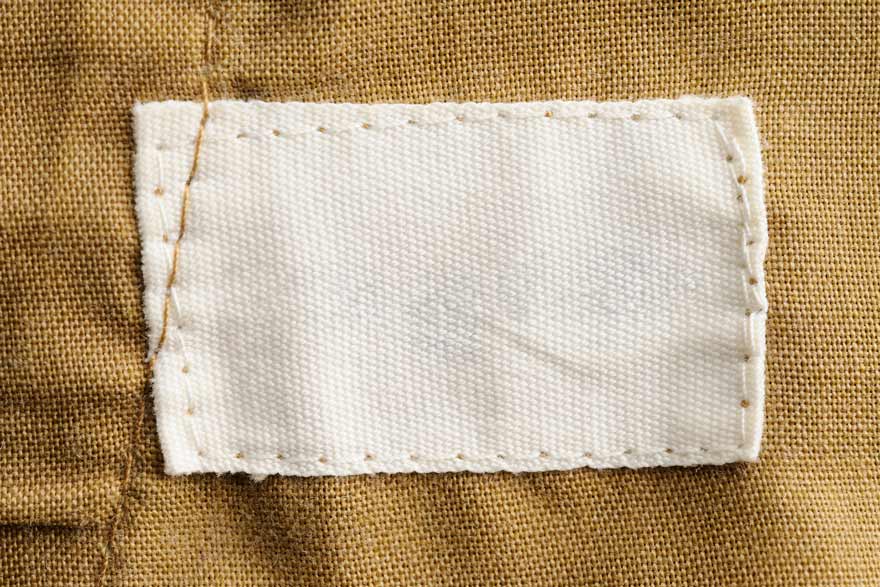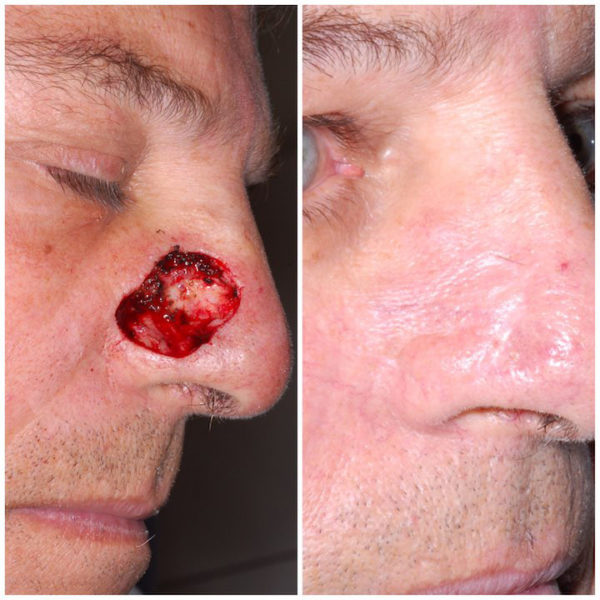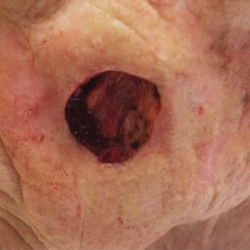Jon, 41, had never heard of flap surgery before he went in to receive treatment for two basal cell carcinomas on his face. Due to his tumor sites (around the eye and nose), Jon had a preoperative consultation with both his dermatologist and a plastic surgeon. He learned that flap surgery might be a part of the reconstruction process after his Mohs surgery to remove the cancer.
“I was concerned, as there’s an element of the unknown going into surgery,” Jon says. “But overall, I felt both the dermatologist and plastic surgeon did a good job of explaining the possible outcomes and results.”
While physicians commonly use Mohs surgery or excisional surgery to remove skin cancer, additional steps may be required to fully reconstruct the surgical site. One way physicians close a surgical area is by using surrounding tissue, also called flap surgery. Darrick Antell, MD, a board-certified plastic and reconstructive surgeon practicing in New York City, says physicians assess options for reconstruction based on several factors. They consider the location of the wound left from the cancer removal, the size of the wound and what will deliver the best results. One reason a flap may be used is to avoid scar contracture, also called shrinkage. Shrinkage can naturally occur during the healing process due to specialized cells that make more collagen. In an area like the nose, shrinkage could cause distortion. A flap can be used to avoid undesirable aesthetic results. Some patients prefer a flap surgery since it offers an alternative to letting an open wound heal on its own, which can take four to six weeks.
“Flap surgery generally involves tissue that is still attached to the body and therefore still has a blood supply,” says Dr. Antell (who did not perform Jon’s surgery). “Local (or adjacent) flaps generally have the same color and skin texture as the defect from the skin cancer surgery. They can yield a better tissue match.”
During the surgery, patients are usually treated with a local anesthetic, though a sedative may be used for especially anxious patients. Jon says the numbing shots were the worst part of both Mohs surgery and the following flap surgery, which he had on the same day.
“It was a long day,” he recalls. “Once all the BCC cells had been removed, I waited two or three hours to see the plastic surgeon. The flap was taken from my upper eyelid area and turned down to reconstruct the corner of my eye and lower eyelid. Both the dermatologist and plastic surgeon did a great job.”
Most commonly, skin cancer defects can be closed with a local flap, as was the case with Jon’s surgery. This kind of flap has a texture identical to what was there before the lesion. If there is a larger defect, however, a physician may have to create a flap from tissue more distant from the surgical site (from the wrist, for example) to get a large enough piece of skin.
“Rarely, a ‘free flap,’ is needed, which involves sewing blood vessels back together to reestablish blood flow,” Dr. Antell explains. “For example, a free flap may be taken from the wrist and transferred to the face to cover a large defect.”
A skin graft, which may be performed when a local flap is not available, is more delicate and involves tissue that does not have a blood supply.
Dr. Antell stresses that all of these surgeries require a good deal of precision. Sometimes, the Mohs surgeon works with a plastic surgeon for a team approach in treating the patient.
Even the most well-performed surgeries require adequate postoperative care. One drawback to flap surgery is that the donor site (where the flap came from) may scar. Dr. Antell says that typically the site heals well with meticulous closure, but patients should be aware of the risk. Though Jon is still slightly self-conscious about the visible scar left from his surgery, he feels lucky that the cancer was diagnosed early, and that he recovered well.
“Recovery was basically painless,” he says. “The area was swollen, and the skin of the flap turned a very ugly dark purple in the days after surgery. It was certainly not pretty to look at for two or three weeks, and my stitches were removed about four weeks after the surgery.”
Dr. Antell stresses that in order to optimize your results it’s important to follow your physician’s instructions for wound care, scar care and any follow-up appointments that may be necessary to monitor your healing.









